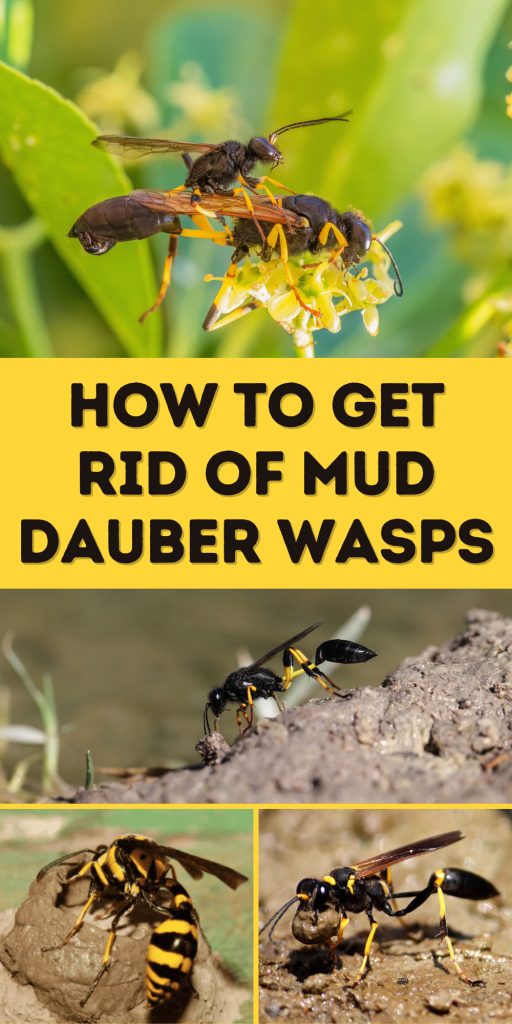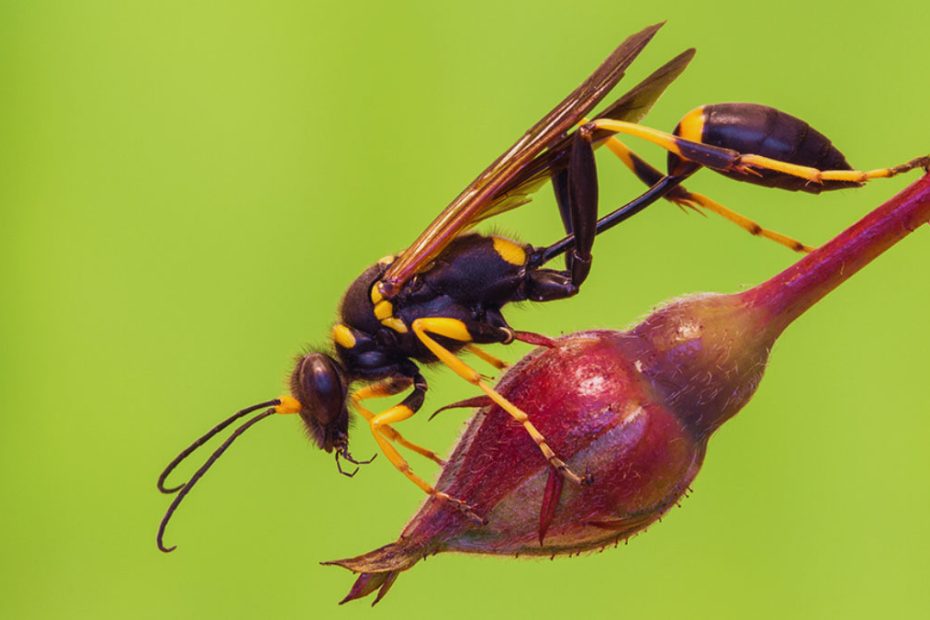Mud dauber wasps might seem harmless, but their unsightly nests and persistent buzzing can quickly become a nuisance around your home. Unlike their aggressive cousins, these solitary wasps rarely sting, but that doesn’t mean you want them setting up camp in your space. Understanding how to safely and effectively get rid of mud dauber wasps is essential for maintaining a peaceful environment.
In this guide, you’ll discover practical steps to identify, prevent, and remove these pesky insects. Whether you’re dealing with a current infestation or want to keep your property wasp-free, our expert tips will help you manage the situation with confidence. Let’s jump into the best strategies for reclaiming your outdoor spaces from these unwelcome guests.
Key Takeaways
- Understanding Mud Dauber Wasps: Recognize that mud dauber wasps are solitary, non-aggressive insects that build nests from mud, making them easier to manage compared to other wasps.
- Identifying Nests: Look for characteristic long, cylindrical mud nests attached to walls, ceilings, or other sheltered areas to identify and address infestations.
- Natural Removal Methods: Utilize essential oils like peppermint, lemongrass, and eucalyptus, or deploy homemade traps with vinegar and soapy water to safely deter and remove wasps.
- Chemical Solutions: When natural methods fail, use targeted insecticides such as wasp sprays, residual insecticides, and dust insecticides, but always follow safety guidelines and label instructions.
- Preventive Measures: Secure entry points by sealing cracks, installing screens, and covering vents. Maintain cleanliness by removing debris and managing food waste to prevent attracting wasps.
- Professional Pest Control: For severe infestations or difficult-to-reach nests, consider hiring professional pest control services to ensure safe and effective elimination, along with preventive advice.

Understanding Mud Dauber Wasps
Understanding mud dauber wasps, known for their less aggressive behavior, is essential for dealing with these insects effectively.
What Are Mud Dauber Wasps?
Mud dauber wasps are solitary insects that construct nests using mud. Unlike social wasps, they don’t reside in large colonies. Key characteristics include:
- Appearance: Slender bodies with a distinct narrow “waist,” varying in color from black to metallic blue.
- Behavior: Primarily non-aggressive, mud daubers rarely sting humans unless provoked.
- Habitat: Often found around structures that provide shelter, such as eaves, garages, and attics.
Identifying Mud Dauber Nests
Identifying mud dauber nests can help in managing and removing them efficiently. These nests have unique features:
- Material: Constructed from mud collected by the female wasp.
- Shape: Typically long, cylindrical tubes or clumps of mud resembling organ pipes.
- Location: Commonly attached to walls, ceilings, or other sheltered areas.
Are Mud Dauber Wasps Dangerous?
Mud dauber wasps are generally not dangerous to humans. Key points to consider include:
- Sting: Rarely sting unless threatened, making them less of a risk compared to other wasps.
- Pest Control: Beneficial in controlling spider populations, as they often paralyze and store spiders in their nests as food for larvae.
- Health Risks: Pose minimal health risks, though their nests can create unsightly messes and potential structural damage if not addressed.
Understanding mud dauber wasps helps you carry out effective measures for managing and preventing infestations around your property.
Natural Methods to Remove Mud Dauber Wasps
Natural methods offer effective and environmentally friendly ways to manage mud dauber wasps around your property. These techniques use non-toxic substances that are safe for you and the environment.
Essential Oils and Natural Repellents
Essential oils can act as natural repellents against mud dauber wasps. These oils help keep wasps at bay without causing harm. Here are some effective options:
- Peppermint Oil: Known for its strong scent, peppermint oil can deter mud daubers. Mix a few drops with water in a spray bottle and apply it to areas where you’ve seen nests.
- Lemongrass Oil: This oil’s pungent smell makes it an excellent repellent. Combine it with water and spray it on mud dauber nests and entry points.
- Eucalyptus Oil: Eucalyptus offers a natural alternative to chemical repellents. You can mix it with water and apply it similarly to the other oils.
- Close Windows: Ensure that doors and windows remain shut, keeping wasps from entering your home.
Homemade Traps
Creating homemade traps targets mud daubers while minimizing harm to the environment. These traps use simple materials and can be effective:
- Bottle Trap: Cut a plastic bottle in half. Invert the top part and place it inside the bottom portion. Fill the bottom with a mixture of sugar water and vinegar. Mud daubers enter the bottle but can’t escape.
- Soapy Water Trap: Fill a shallow dish with soapy water. The soap reduces water tension, causing wasps to sink when they land.
- Vinegar Trap: Use a small dish with equal parts vinegar and water. Mud daubers are attracted to the vinegar but will drown in the mixture.
Use these natural methods to keep your property free of mud dauber wasps without resorting to harmful chemicals.
Chemical Solutions
When natural methods aren’t enough, chemical solutions are effective for getting rid of mud dauber wasps. You can apply insecticides or other chemical treatments safely to ensure complete eradication without causing harm to yourself or others.
Insecticides
Using insecticides specifically designed for wasps can help target mud daubers directly. Look for:
- Wasp Sprays: Aerosol sprays provide quick knockdown power, allowing you to spray nests from a distance.
- Residual Insecticides: Products in powder or liquid form can be applied to areas where mud daubers are active. This long-lasting effect ensures continued control.
- Dust Insecticides: These can be puffed into nests and crevices. They have a slower action but penetrate deep into the mud nests.
Effective products include those containing permethrin, bifenthrin, or cyfluthrin. Always read and follow the label instructions for best results.
Applying Chemical Treatments Safely
Safety is paramount when using chemicals. Follow these guidelines:
- Wear Protective Gear: Use gloves, long sleeves, and goggles to protect yourself from sprays and dust.
- Apply During Non-peak Hours: Treat nests early in the morning or late in the afternoon when wasps are less active.
- Follow Label Instructions: Ensure proper dosage and application as per the product’s guidelines.
- Ensure Proper Ventilation: If treating indoor areas, make sure the space is well-ventilated.
Always dispose of used chemical containers responsibly, ensuring they don’t harm the environment. By adhering to these safety practices, you can effectively eliminate mud dauber wasps using chemical solutions while minimizing risks.
Preventive Measures
Taking proactive steps can keep mud dauber wasps from becoming a nuisance. Focus on securing entry points and maintaining cleanliness around your property.
Securing Entry Points
Prevent mud daubers from entering your home or structures by securing entry points.
- Seal Cracks and Gaps: Inspect and seal cracks, gaps, and holes in walls, roofs, and foundations. Use materials like caulk or weatherstripping.
- Install Screens: Fit window and door screens to block wasps while allowing ventilation. Ensure screens are in good condition, without tears or holes.
- Cover Vents: Install fine mesh over vents, including attic and crawl space vents, to deter wasps without obstructing airflow.
- Maintain Masonry: Regularly check and repair mortar in brickwork and cement in concrete to prevent wasp entry.
Keeping Surroundings Clean
Maintaining a clean environment reduces the attractiveness of your property to mud dauber wasps.
- Remove Clutter: Clear debris, fallen branches, and unused items from your yard. These can provide nesting sites for wasps.
- Dispose of Food Waste Properly: Securely cover trash bins and compost heaps. Regularly clean these areas to eliminate food sources that attract wasps.
- Clean Up Spills: Promptly clean up any food or drink spills, especially sugary substances which attract various insects, including wasps.
- Maintain Landscaping: Trim overgrown vegetation and remove weeds. This reduces hiding spots for wasps and other insects.
- Monitor for Nests: Regularly inspect for early signs of nest-building around your property. Remove small nests immediately to prevent larger infestations.
Carry out these preventive measures consistently to minimize the risk of mud dauber wasp infestations and maintain a wasp-free environment.
Professional Pest Control
When dealing with a significant mud dauber wasp infestation, professional pest control services offer expert solutions. Professionals possess the skills, experience, and tools necessary for safely and efficiently eliminating these pests.
When to Call a Professional
Consider hiring professional pest control in the following situations:
- Large Infestation: If you notice a high number of mud dauber wasps around your property.
- Access Issues: When nests are in hard-to-reach areas, such as high eaves or inside walls.
- Persistent Infestation: If mud dauber nests return even though your efforts to eliminate them.
- Safety Concerns: When you have allergies or sensitivities to wasp stings, prioritizing personal safety.
What to Expect from Pest Control Services
Professional pest control services encompass several key steps. Here’s what you can expect:
- Assessment: Initial inspection to identify the extent and specific locations of the infestation.
- Treatment Options: Tailored solutions including insecticides, traps, and physical removal methods.
- Safety Precautions: Use of protective gear, ensuring the safety of both the technician and your household.
- Post-Treatment Steps: Advice on preventive measures to avoid future infestations, such as sealing entry points or maintaining cleanliness.
- Follow-Up: Scheduled checks to ensure the infestation has been eradicated and to address any new concerns.
By relying on professional pest control services, you can effectively manage mud dauber wasp infestations while minimizing risks to yourself and your property.
Conclusion
Effectively managing mud dauber wasps requires a combination of identification, prevention, and removal techniques. By understanding their behavior and using natural or chemical methods, you can maintain a wasp-free environment. Preventive measures like sealing entry points and maintaining cleanliness are essential to keep these pests at bay. If infestations become unmanageable, professional pest control services offer a reliable solution. With the right approach, you can enjoy a peaceful home free from the nuisance of mud dauber wasps.
Frequently Asked Questions
What are mud dauber wasps?
Mud dauber wasps are solitary insects known for building nests out of mud. They are generally non-aggressive and help control spider populations.
How can I identify a mud dauber wasp nest?
Mud dauber wasp nests are made of mud and typically shaped like long tubes or clumps. They are often found in sheltered locations like under eaves or in garages.
Are mud dauber wasps dangerous?
Mud dauber wasps are less aggressive compared to other wasps and rarely sting humans unless provoked. They can be beneficial by controlling spider populations.
How can I prevent mud dauber wasps from building nests around my home?
Preventive measures include sealing cracks and gaps, installing screens, covering vents, and maintaining cleanliness around the property to discourage nest building.
What natural methods can I use to deter mud dauber wasps?
Natural methods include using essential oils like peppermint, lemongrass, and eucalyptus as repellents, as well as creating homemade traps using bottles, soapy water, and vinegar.
When should I consider using chemical solutions for mud dauber wasps?
Chemical solutions should be considered when natural methods are insufficient. Use insecticides specifically designed for wasps, following safety guidelines and label instructions.
What safety precautions should I take when using insecticides?
Wear protective gear, apply treatments during non-peak hours, ensure proper ventilation, and follow label instructions to minimize risks when using insecticides.
How can professional pest control services help with mud dauber wasp infestations?
Professionals offer assessment, tailored treatment options, safety precautions, post-treatment advice, and follow-up checks to effectively manage significant infestations.
When should I call a professional for mud dauber wasp control?
Consider professional help for large infestations, access issues, persistent nests, or safety concerns due to allergies.
What should I expect from professional pest control services?
Expect an assessment, customized treatment plan, adherence to safety protocols, post-treatment advice, and follow-up checks to ensure effective and safe wasp management.
